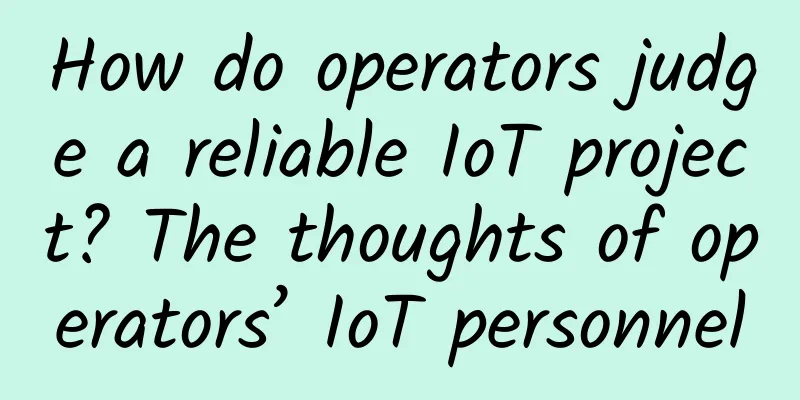A roundup of the top 10 data center news stories of 2018

|
The public cloud has not killed the data center, despite some predictions that this would happen in 2018. Not only are data centers still here, but global spending on data center infrastructure such as servers, storage and networking is booming. 2018 can be said to be the year of the software-defined data center, with a lot of automation and artificial intelligence research and development efforts dedicated to building the next generation of scalable and flexible data centers. It was a groundbreaking year for data center leaders Dell and HPE, with Dell leading in global sales and HPE increasing its efforts in composable infrastructure.
Here’s a look at the top 10 data center news stories of 2018. 10. Amazon, Google, and Facebook are rapidly expanding their data centers The three tech giants Amazon, Google, and Facebook have all rapidly expanded their data center footprints in the U.S. and around the world in 2018. The three giants have accelerated their data center construction around the world and have become the largest data center infrastructure buyers this year to meet the growing demand for data and cloud. Amazon currently has 57 data centers in 19 regions around the world, including a new data center opened in Sweden this year. In addition, Amazon has announced plans to build three new data centers in Italy and the first center in Africa by 2020. Social media giant Facebook has also expanded its data center footprint this year, increasing the number of centers in Nebraska from two to six, opening a ninth data center in Georgia, and planning to build an 11-story, 170,000 square foot data center in Singapore. Google Cloud has also been expanding its global data center footprint this year, opening its first Cloud Platform center in Montreal and planning to open three new data centers in Switzerland in early 2019. The three giants are likely to continue to invest billions of dollars in new data center construction next year. 9. Hyperconverged infrastructure goes mainstream The hyperconverged infrastructure (HCI) market matured at an astonishing pace in 2018, reaching an all-time high in annual revenue, especially in the second quarter, when sales reached $1.5 billion, a year-on-year increase of 78%. This year, hyperconverged infrastructure products have made significant progress in a wider range of use cases and deployment options. Vendors such as Nutanix, Dell EMC, Cisco, Pivot3 and HPE are expanding their strategies to better adopt hybrid cloud and multi-cloud, providing more pure computing, pure storage and software-defined networking options to drive the pace of innovation. Hyperconverged infrastructure can reduce data center complexity and can be used more to support business-critical enterprise applications from Microsoft, Oracle and SAP tycoons. As server, storage and network silos gradually disappear, the demand for human-computer interaction will undoubtedly continue to increase in 2019. 8. Dell Technologies goes public Data center infrastructure leader Dell Technologies is set to go public on Dec. 28, and Dell has spent the past year talking about the best way to do so. Dell's battle to go public began in January with lawsuits, investor spats, and a revised shareholder agreement. News reports have been rife over the past year about whether Dell can win shareholder approval or seek other ways to go public, or even get banks involved in a traditional public offering. Activist investor Carl Icahn, who holds a large number of Dell and VMware tracking shares, sued Dell, alleging that the company was creating a "fear plan" to win shareholder approval. However, after months of heated statements, he agreed to the deal. Channel partners say the reborn Dell Technologies will spend more on research and development and integrate and innovate more closely with VMware. 7. Nutanix becomes a force to be reckoned with 2018 was a revolutionary year for Nutanix, a pioneer in hyperconverged infrastructure, as it continued its transformation to a software-centric company, launched new innovative technologies, and consistently achieved strong sales growth. In 2018, the number of hyperconverged infrastructure solutions in the data center exploded, and various research analyses and reports showed that Nutanix was at the forefront of innovation. Nutanix received the highest score for Forrester hyperconverged technology and was regarded as the best in Gartner's Magic Quadrant for Hyperconverged Infrastructure. Facing technology giants such as Dell, HPE and Cisco, Nutanix not only competed actively, but also did not back down at all. In 2019, Nutanix is committed to taking a place in the software-defined data center and has set its sights on achieving $3 billion in software and support revenue by 2021. 6. IBM's $3.4 billion acquisition of Red Hat has a significant impact on the data center sector For years, Big Blue IBM has been a one-stop shop for data center solutions, but the acquisition of Red Hat's popular open source software makes IBM a more interesting data center player. Red Hat has a significant presence in the data center, with Red Hat Enterprise Linux being one of the most popular Linux distributions. Since Red Hat's operating system is available on public clouds and it is also a key player in the OpenStack ecosystem, being acquired by IBM will have a variety of impacts on the data center market, including intensifying competition with Dell Technologies and HPE. The acquisition will put IBM directly at the forefront of the hybrid cloud world. "We have been shaping IBM," said IBM CEO Ginni Rometty. "IBM will become the world's largest hybrid cloud provider, providing enterprises with the only open cloud solutions that can unlock the full value of the cloud." 5. Energy efficiency management vendors test software and services Data center energy efficiency management leaders APC by Schneider Electric and Eaton demonstrated their software and services strength in 2018, launching technologies that help solution providers generate new recurring revenue. As the market demand for edge computing and IoT services continues to increase, energy efficiency management providers have also launched software and service platforms around lifecycle management for customer data centers and distributed environments. Eaton focuses on provider energy efficiency management as a service, while APC by Schneider Electric has entered the hyper-converged infrastructure market through a partnership with Scale Computing and launched a new "micro data center in a box." This year has been a year of innovative breakthroughs for data center energy efficiency vendors, who have focused their research and development on launching new software features and building more cloud-based new versions around older product lines. 4. HPE doubles down on composable infrastructure With the launch of HPE Composable Cloud for Synergy, HPE has continued to increase its investment in composable infrastructure this year. HPE has also injected its own composable technology into the SimpliVity hyper-converged infrastructure, which includes a breakthrough composable mesh network structure. HPE's newly launched Composable Cloud allows customers to combine any workload across any cloud and supports the full HPE software stack, including built-in artificial intelligence from HPE InfoSight, HPE OneView and HPE OneSphere. IT research firm Forrester said that composable infrastructure will become the main method of software-defined data center computing in the future. Composable infrastructure allows storage, computing and network products to act as a fluid resource pool that can be configured according to workload requirements to achieve optimal performance. Recently, Dell EMC recently announced the launch of the PowerEdge MX modular platform. I believe that HPE will start a new competition in the market in 2019. 3. The rise of software-defined data centers; public cloud is not the answer At the beginning of 2018, some people believed that public cloud would mark the death of the data center. However, as 2018 is coming to an end, this prediction has not progressed at all, and even public cloud computing giant AWS is preparing to launch its own data center hardware next year. As innovative technologies such as artificial intelligence and automation further drive the development of software-defined data centers (SDDCs), demand for new servers, storage, and converged products will remain high in 2018. Due to the high cost of public cloud computing, many enterprises have begun to shift their spending on public clouds to SDDC products. According to a 2018 IDC survey, 80% of IT decision makers will migrate applications or data that originally belonged primarily to public cloud environments to on-premises or private cloud environments due to security, performance, and cost issues. These software-centric data centers reduce the burden on manufacturers and solutions, while also unlocking new data and analytical opportunities. 2. AWS hardware comes to your data center AWS's announcement of AWS Outposts shocked the hardware community. As a leader in the public cloud space, AWS is reaching deeper into local environments with an integrated computing and storage hardware rack that can run native AWS or VMware environments and connect to Amazon's public cloud. AWS CEO Andy Jassy said Outposts was born out of customers' desire to extend AWS or VMware Cloud on AWS to local environments using the same hardware, interfaces, and APIs as AWS. "We developed AWS Outposts by trying to reimagine what customers really want when running in a hybrid mode." Amazon plans to deliver, install, maintain, and repair Outposts, which has caused some concerns in the channel community. Although there are still some issues and Outposts will not be available until the second half of 2019, it is certain that AWS will cause a revolution in the data center market next year. 1. Dell Technologies becomes a force in the data center There is no doubt that 2018 was a critical year for Dell Technologies as it became the world leader in servers, storage, and hyperconverged infrastructure. This year, Dell Technologies injected up to $2 billion into the storage business and began a full-scale attack on the market. This year, Dell Technologies launched a new simplified storage product and began to implement a new go-to-market strategy, which led to a year of high storage sales. In addition, this year Dell Technologies also took control of the global server market, surpassing HPE. Dell and VMware also led the hyperconverged infrastructure market share this year, which indicates that Dell's data center infrastructure market share will perform better in 2019 as hyperconverged infrastructure continues to gain more market attention. With Dell Technologies about to become a public company, the future looks bright and it is expected to maintain its leading position in the data center field. |
<<: Green operation, data center still depends on automation
>>: Where are the telecom operators headed in 2019?
Recommend
Huawei releases next-generation O&M architecture for autonomous network operation, expected to save operators 25% of O&M costs
On April 17, 2019, at HAS2019, Huawei released th...
Knowledge points of wireless network coverage system
1. What is AP? Answer: AP - Wireless Access Point...
How about HostYun? Simple test of HostYun Los Angeles CN2 GIA cheap version
Recently, I shared the news that HostYun (Host Cl...
5G user development starts with focusing on high quality
[[385400]] Recently, the Ministry of Industry and...
How 5G helps IoT in healthcare
At a time when demand for healthcare services is ...
[New Year's Day] DogYun Elastic Cloud 30% off/Classic Cloud 20% off 16 yuan/month, top up 100 yuan and get 10 yuan free, independent server 200 yuan/month
DogYun (狗云) has launched a promotional event duri...
How do SD-WAN solutions improve network performance?
In the 2016 National WAN Report survey, responden...
Will SD-WAN replace SASE? Intelligent network services still depend on its
If we think about it, we will find that many of o...
Looking at the future from the perspective of performance, how will operators enter the second half of the 5G competition?
2021 is a big year for China's 5G development...
RAKsmart: 35% off VPS hosting/30% off cloud servers, US/Japan/Korea/Hong Kong VPS monthly payment starting from $1.95, CN2/AS9929, etc.
RAKsmart's year-end discount is coming. In ad...
Justhost Hong Kong VPS upgraded to up to 10Gbps bandwidth, 20% off unlimited traffic, starting at $3.46 per month
I received a message from Justhost.ru, hoping to ...
my country has already achieved commercial use of 5G, with leading technology and scale, but it is difficult to fully popularize it due to three problems
The most frequently heard topic in the past two y...
618 is here, it’s time to upgrade your WiFi 6 router!
[[404856]] 618 is here, and during the annual sho...
Under the SDN wave, where will traditional routing technology go?
introduction "All martial arts come from Sha...
5G has been developed for three years, why are people still using 4G?
I remember that in 2018, there was a lot of news ...









